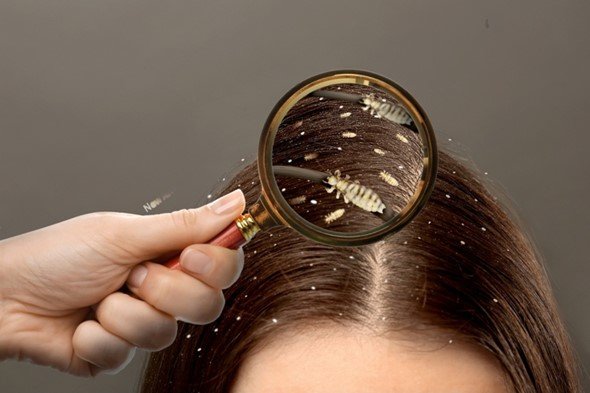Dandruff is one of the most common scalp conditions, and lice is no exception. Although both are completely different, people often get confused because of some similarities.
This is completely valid because most people are unaware of the basic differences between the two conditions. That is why I have described them here.
Read this article completely to distinguish each condition from the other. Later, you will also understand how easy it is to treat each condition. But first, let’s briefly introduce both.
Dandruff vs Lice
The itchy, flaky, and oily or dry scalp is usually a sign of dandruff. This condition is not harmful.
Also, it cannot spread from person to person through combs, clothes, or accessories or via physical contact.
A yeast Malassezia breaks down the sebum oil, leaving unsaturated fatty acids behind. This substance results in the formation of oily flakes on the scalp. The scalp often itches.

On the other hand, licorice is a mini parasite that lives on our scalp. They also lay eggs (nits), which usually hatch in 6 to 9 days.
Lice can live up to 30 days on our head and 1 to 2 days on comb or outside. Female lice can lay up to 8 eggs in a day.
They feed on our blood to thrive. They usually feed at various times in a single day to survive.
Both can be considered the same, but the key differences between dandruff vs lice below will help you identify each.
How to tell the difference?
Causes
They both appear in different scenarios. Malassezia usually causes dandruff, as I mentioned Earlier.
Overproduction of sebum oil can also lead to the formation of flakes on the scalp. Or the flakes could be simple dust particles stuck on your head.
On the other hand, there is no cause of lice. They are highly contagious, and they can transfer from using items of the affected person.
Appearance
They both have a different appearance. If the flakes are yellowish or white and are stuck to the scalp, it is dandruff.
Lice can be seen with the naked eye crawling on the head. You might feel the sensation of something crawling on your head.
Lice eggs are often mistaken with dandruff but the eggs are often teardrop-shaped. If you feel intense and rapid itching, it is due to lice sucking your blood.
Dandruff does not itch rapidly or intensely. Lice may also look like tiny red spots on the scalp. Dandruff does not cause a sensation of something crawling on the scalp.
It usually leads to itching when the scalp is dry. If an oily scalp is itching excessively, it could be lice.
Comb your hair with a fine-tooth comb and see if a lice appears there.
If nothing appears except white flakes after thoroughly combing, it could be dandruff.
Lice are living creatures that lay eggs while dandruff is just a build-up of white or yellowish flakes.
Location
The location of their appearance is also a great way to tell the clear difference between both. Dandruff flakes and patches appear on the scalp.
The flakes often fall on shoulders but they are usually sicked to the skin of the head. While lice come to suck blood on the scalp but they usually appear on hair. Also, they lay eggs on hair shafts and stick them with a sticky fluid-like material.
These tiny creatures mostly live on the back of the ear and head and they also love to lay eggs there.
The white eggs will be located on hair shafts, not the scalp. So, this is an easy way to differentiate between dandruff and lice.
How to treat each condition?
Both conditions are different and need different approaches for the treatment. When you have identified what problem, you are dealing with, it is time to get the treatment.
Dandruff is not a big issue. There is no need to get the treatment for mild scenarios.
If symptoms are severe (seborrheic dermatitis), a medicated dandruff shampoo will be enough for cleaning the scalp from flakes.
For the second condition, I recommend buying an anti-lice shampoo. Use the shampoo for a few days to weeks to see if it works.
Make sure to use medically approved products for each condition.
Even after treatment, you are likely to get these conditions. If that happens, get the required treatment.
After that, avoid using the personal items of the affected person. This will help you avoid getting lice in the future.
Conclusions
Do not panic! Both conditions are completely normal and quite common in both males and females.
The upper-described ways will help you diagnose the condition of your scalp.
Look for their appearance and location to determine what condition you are facing on your scalp. Then, get the right treatment.








